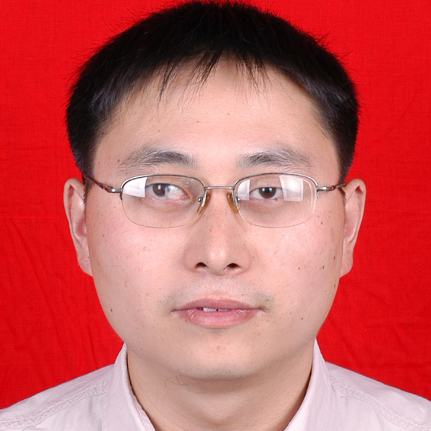International Journal of Information Technology and Computer Science (IJITCS)
IJITCS Vol. 6, No. 2, 8 Jan. 2014
Cover page and Table of Contents: PDF (size: 507KB)
A Hybrid Multi-sensor Multi-target Tracking Scheme with MLE and ANFIS
Full Text (PDF, 507KB), PP.14-21
Views: 0 Downloads: 0
Author(s)
Index Terms
MMT, MLE, ANFIS, JPDA, State Fusion
Abstract
The Joint Probabilistic Data Association (JPDA) solves single sensor multi-target tracking in clutter, but it cannot be used directly in multi-sensor multi-target tracking (MMT) and has high computational complexity with the number of targets and the number of returns. This paper presents a hybrid method to implement MMT by combing Maximum Likelihood Estimation (MLE) with Adaptive Neuro-Fuzzy Inference System (ANFIS). The MLE is applied to classify the same source observations at one time into the same set, then the cheap JPDA(CJPDA) approach is used to calculate the data association probability, and ANFIS is used to realize the MMT. The computer simulations indicate that this scheme achieves MMT perfectly with higher precision and easy realization.
Cite This Paper
Su Liyun, "A Hybrid Multi-sensor Multi-target Tracking Scheme with MLE and ANFIS", International Journal of Information Technology and Computer Science(IJITCS), vol.6, no.2, pp.14-21, 2014. DOI:10.5815/ijitcs.2014.02.02
Reference
[1]Kam Hon Yoon, “Efficacy and Cytokine Modulating Effects of Tacrolimus in Systemic Lupus Erythematosus: A Review,” Journal of Biomedicine and Biotechnology, Vol. 2010, Article ID 686480, 4 pages, 2010.
[2]Scott A. Miller, Zachary A. Harris, and Edwin K. P. Chong, “A POMDP Framework for Coordinated Guidance of Autonomous UAVs for Multitarget Tracking,” EURASIP Journal on Advances in Signal Processing, Vol. 2009, Article ID 724597, 17 pages, 2009.
[3]Haidong Yan, Jun Li, and Guisheng Liao, “Multitarget Identification and Localization Using Bistatic MIMO Radar Systems,” EURASIP Journal on Advances in Signal Processing, Vol. 2008, Article ID 283483, 8 pages, 2008.
[4]K. N. Plataniotis and D. G. Lainiotis, “Multisensor estimation: New distributed algorithms,” Mathematical Problems in Engineering, Vol. 3, No. 1, pp. 27-52, 1996.
[5]Young Song, Du Yong Kim, Yong Hoon Kim, Suk Jae Lee, and Vladimir Shin, “Distributed Fusion Receding Horizon Filtering in Linear Stochastic Systems,” EURASIP Journal on Advances in Signal Processing, Vol. 2009, Article ID 929535, 8 pages, 2009.
[6]Xiang Chen, Chong-Yung Chi, Tsung-Hui Chang, and Chon-Wa Wong, “Non-Cancellation Multistage Kurtosis Maximization with Prewhitening for Blind Source Separation,” EURASIP Journal on Advances in Signal Processing, Vol. 2009, Article ID 534137, 13 pages, 2009.
[7]Blackman, S. S, “Multiple target tracking with radar applications,” Boston, Artech House, 1986.
[8]Bar-Shalom. Y, Fortmann. T. E, “Tracking and data association,” San Diego, CA, Academic Press, 1988.
[9]Bar-Shalom. Y, “Multi-target multi-sensor tracking,” Principles and Techniques. YBS Publishing. 1995.
[10]Ilke Turkmen, Kerim Guney, “Cheap Joint Probabilistic Data Association with Adaptive Neuro-Fuzzy Inference System State Filter for Tracking Multiple Targets in Cluttered Environment,” Int. J. Electron. Commun. (AEU), 58 (2004): 349-357.
[11]Rongbo Zhu, “Efficient Fault-Tolerant Event Query Algorithm in Distributed Wireless Sensor Networks,” International Journal of Distributed Sensor Networks, Vol. 2010, Article ID 593849, 7 pages, 2010.
[12]Benlian Xu, Huigang Xu and Jihong Zhu, “Ant clustering PHD filter for multiple-target tracking,” Applied Soft Computing, Vol. 11, No. 1, pp. 1074-1086, 2011.
[13]Fitzgerald, R. J, “Development of practical PDA logic for multi-target tracking by microprocessor,” in Proceedings of American Control Conference (ACC’86), Washington, 1986: 889-897.
[14]Jang, S. R, “Adaptive-network-based fuzzy inference system,” IEEE Trans. Systems, Man, and Cybernetics, 23 (1993):665-685.
[15]Jang, S. R, Sun and C. T. Mizutani, E, “Nenro-fuzzy and soft computing: A computational approach to learning and machine intelligence,” Prentice-Hall: Upper Saddle River, NJ, 1997.
[16]Su Liyun, Ma Hong, Li Zheng, Ju, Shenggen, „Blind image restoration based on constant modulus with averaging and ANFIS,” in Proceedings of the Fourth International Conference on Image and Graphics (ICIG’07), pp. 143-148, Chengdu, China, 2007.
[17]Karl Friston, Klaas Stephan, Baojuan Li, and Jean Daunizeau, “Generalised Filtering,” Mathematical Problems in Engineering, Vol. 2010, Article ID 621670, 34 pages, 2010.
[18]Sunghan Kim, Anindya S. Paul, Eric A. Wan, and James McNames, “Multiharmonic Frequency Tracking Method Using The Sigma-Point Kalman Smoother,” EURASIP Journal on Advances in Signal Processing, Vol. 2010, Article ID 467150, 13 pages, 2010.
[19]Peng Jian, Su Liyun, “Performance analysis of blind multiuser detector with fuzzy kalman filter in IR-UWB,” International Journal of Distributed Sensor Networks, Vol. 5, No.1, pp. 47-47, 2009.
[20]Su Liyun, Ma Hong, Tang Shifu, “Weak signal detection in strong fractional noise using chaos oscillator and Kalman filtering,” Journal of Sichuan University: Engineering Science edition, Vol. 39, No, 3, pp. 149-154, 2007.
[21]Su Li-yun, “Prediction of multivariate chaotic time series with local polynomial fitting," Computers & Mathematics with Applications, vol. 59, no. 2, pp. 737-744, 2010.
[22]Su Liyun, Zhang Yuli, Ma Yanju, Li Jiaojun, and Li Fenglan, Multiscale KF Algorithm for Strong Fractional Noise Interference Suppression in Discrete-Time UWB Systems[J], Discrete Dynamics in Nature and Society, vol. 2011, Article ID356421, 9pages, 2011.
